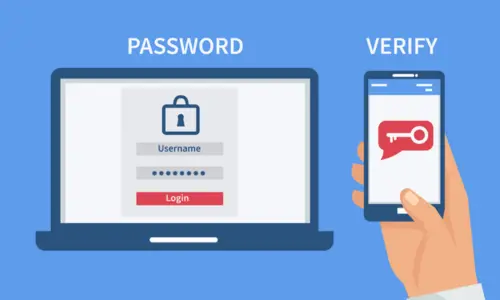Why Two-Factor Authentication is a Must for Your Online Security
In an era where cyber threats are increasingly sophisticated and pervasive, ensuring robust online security is more critical than ever. One of the most effective measures to enhance your digital security is Two-Factor Authentication (2FA). This extra layer of protection significantly reduces the risk of unauthorized access to your accounts, even if your password is compromised. This article will explore the importance of 2FA, how it works, and why it is essential for safeguarding your online presence.
1. Understanding Two-Factor Authentication (2FA)
Unlike traditional password-only authentication, 2FA adds an additional verification step to confirm your identity.
1.1 Components of 2FA:
1.1.1 Something You Know:
- Password or PIN: This is the traditional form of authentication where you enter your password or Personal Identification Number (PIN) to access your account.
1.1.2 Something You Have:
- Authentication Device: This could be a mobile phone, hardware token, or smart card that generates or receives a unique verification code.
- One-Time Password (OTP): A temporary code sent to your phone via SMS, email, or generated by an authentication app.
1.1.3 Something You Are:
- Biometric Data: This includes fingerprint scans, facial recognition, or voice recognition as an additional form of verification.
2. How Two-Factor Authentication Works
The process of 2FA involves the following steps:
2.1 Initial Login:
- Enter Credentials: You start by entering your username and password as usual.
2.2 Verification Step:
- Receive Code: After entering your password, you will be prompted to provide an additional verification code. This code is sent to your registered device or generated by an authentication app.
2.3 Confirm Identity:
- Enter Verification Code: Input the received code into the designated field to complete the authentication process.
2.4 Access Granted:
- Successful Authentication: Once the correct code is entered, you gain access to your account or system. Without the second factor, access is denied, even if the password is correct.
3. Benefits of Two-Factor Authentication
Implementing 2FA offers several significant advantages that enhance your online security:
3.1 Enhanced Security:
- Reduced Risk of Unauthorized Access: Even if a hacker obtains your password, they would still need the second factor to access your account.
- Protection Against Password Theft: 2FA mitigates the risks associated with password breaches, phishing attacks, and keyloggers.
3.2 Safeguarding Sensitive Information:
- Secure Personal Data: 2FA helps protect sensitive personal and financial information, such as bank accounts, emails, and social media profiles.
- Prevent Identity Theft: By adding an extra layer of verification, 2FA reduces the likelihood of identity theft and fraud.
3.3 Increased Confidence in Security:
- Enhanced Trust: Knowing that your accounts are protected by 2FA can provide peace of mind and increase your confidence in your online security.
- Boosts Compliance: For organizations, 2FA helps meet regulatory compliance requirements for data protection and cybersecurity.
4. Types of Two-Factor Authentication
There are various methods and technologies for implementing 2FA, each with its advantages and considerations:
4.1 SMS-Based Authentication:
- How It Works: A one-time code is sent to your mobile phone via SMS.
- Pros: Easy to use and widely supported.
- Cons: Vulnerable to SIM swapping and interception.
4.2 Email-Based Authentication:
- How It Works: A verification code is sent to your email address.
- Pros: Accessible and simple to set up.
- Cons: Email accounts can be compromised, and delivery delays may occur.
4.3 Authentication Apps:
- How It Works: Apps like Google Authenticator or Authy generate time-based one-time passwords (TOTP) on your mobile device.
- Pros: More secure than SMS, works offline, and provides immediate access.
- Cons: Requires installation and setup on a mobile device.
4.4 Hardware Tokens:
- How It Works: Physical devices, such as USB keys or smart cards, generate or store authentication codes.
- Pros: High level of security, resistant to phishing attacks.
- Cons: Additional cost and physical management required.
4.5 Biometric Authentication:
- How It Works: Uses biometric data, such as fingerprints or facial recognition, for verification.
- Pros: Convenient and difficult to replicate.
- Cons: Privacy concerns and potential for false rejections or acceptances.
5. Setting Up Two-Factor Authentication
Implementing 2FA on your accounts is a straightforward process. Follow these general steps to enable 2FA:
5.1 Access Security Settings:
- Log In: Sign in to the account or service where you want to enable 2FA.
- Navigate to Security Settings: Go to the security or account settings section.
5.2 Choose 2FA Method:
- Select Your Preferred Method: Choose the type of 2FA you wish to use, such as SMS, authentication app, or hardware token.
5.3 Follow Setup Instructions:
- Complete Verification: Follow the provided instructions to complete the setup. This usually involves scanning a QR code, entering a verification code, or connecting a hardware token.
5.4 Save Backup Codes:
- Backup Codes: Many services provide backup codes for emergency access.
5.5 Test 2FA:
- Verify Functionality: Log out and log back in to ensure that 2FA is working correctly.
6. Best Practices for Using Two-Factor Authentication
To maximize the benefits of 2FA, consider the following best practices:
6.1 Use 2FA for All Accounts:
- Enable Across Platforms: Apply 2FA to all accounts that support it, including email, social media, and financial accounts.
6.2 Keep Backup Options Secure:
- Store Securely: If you use backup codes or recovery methods, store them in a safe and secure location.
6.3 Monitor Account Activity:
- Regular Checks: Regularly review your account activity for any unusual or unauthorized actions.
6.4 Update Authentication Methods:
- Periodic Reviews: Periodically review and update your 2FA methods to ensure they remain secure and effective.
7. Challenges and Considerations
7.1 Accessibility Issues:
- Device Dependency: Some 2FA methods require access to a specific device, which may be inconvenient if the device is lost or unavailable.
7.2 Potential for Lockout:
- Recovery Problems: If you lose access to your 2FA device, you may face difficulties accessing your accounts. Ensure you have backup options and recovery methods in place.
7.3 Usability Concerns:
- User Experience: Some users may find 2FA to be an extra step, potentially affecting their user experience. However, the added security benefits outweigh this inconvenience.
Conclusion
Two-Factor Authentication (2FA) is a crucial component of modern online security, providing an additional layer of protection against unauthorized access and cyber threats. By requiring two distinct forms of identification, 2FA significantly enhances the security of your accounts and personal information.
Implementing 2FA across all your accounts, selecting the appropriate method for your needs, and adhering to best practices will help safeguard your digital presence from increasingly sophisticated threats. Embrace 2FA as a fundamental aspect of your online security strategy to ensure a safer and more secure online experience.







